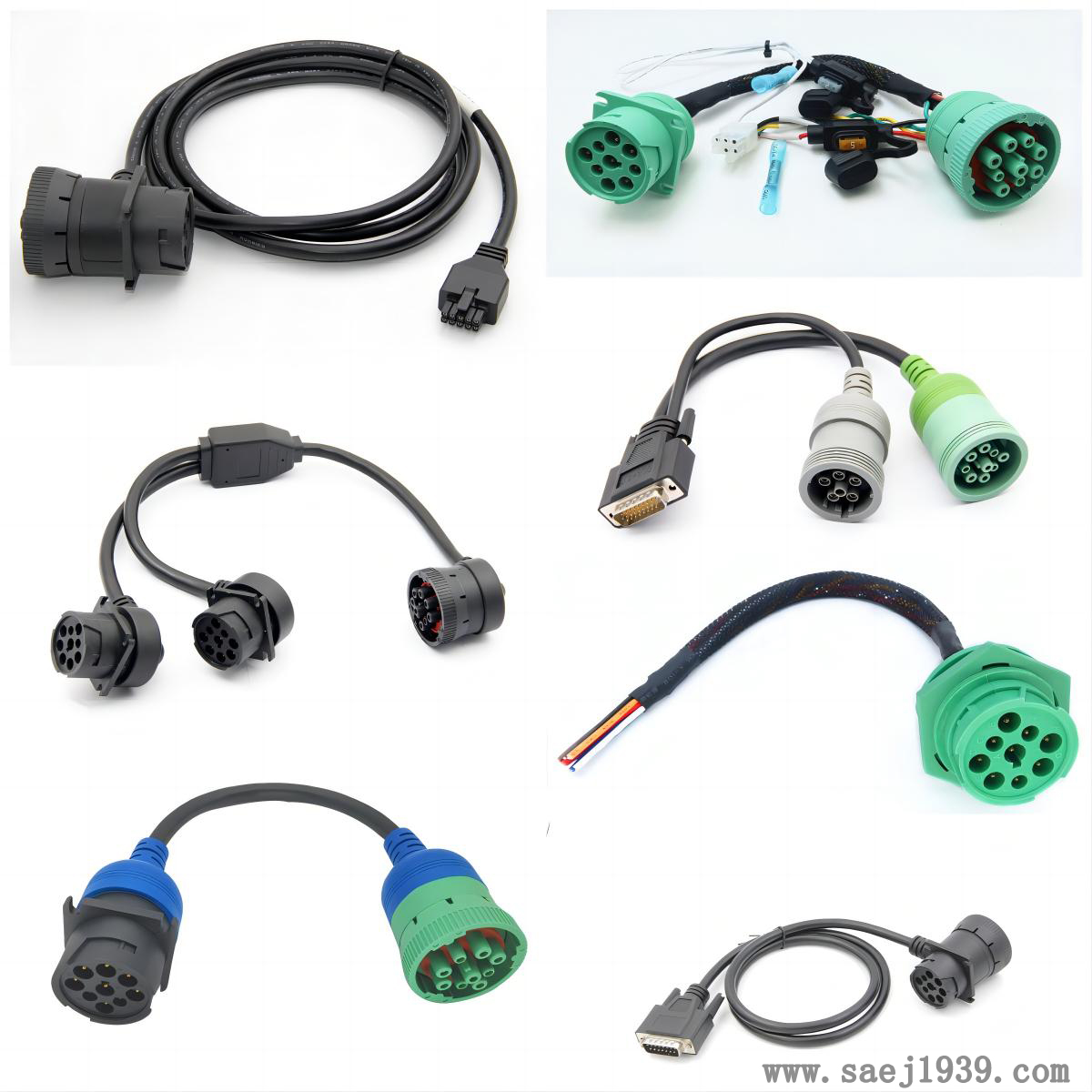What problems may be encountered when installing J1939 splitter Y cable?
When installing the J1939 splitter Y cable, the following types of issues may be encountered:
Electrical connection issues
Poor contact: The pins of the connector may have poor contact with the device interface due to oxidation, deformation, looseness, or impurities, resulting in unstable signal transmission, interruption, or data errors. For example, vibrations during vehicle operation may cause loose connectors that are not fully plugged in, further deteriorating the contact condition.
Short circuit or open circuit: The insulation layer of the wires inside the cable may be damaged due to wear, compression, aging, etc., resulting in a short circuit between the wire cores, or a broken wire causing an open circuit. If the cable is scratched by a sharp object during installation, it may damage the insulation layer and cause a short circuit fault.
Electromagnetic interference: There are various sources of electromagnetic interference inside the vehicle, such as the engine ignition system, motor, etc. If the Y cable of the splitter is not installed correctly in a position far away from the interference source, or if the shielding layer is poorly grounded, it is easy to be affected by electromagnetic interference, resulting in signal quality degradation, data transmission errors, increased bit error rates, and other problems.

Mechanical installation issues
Limited installation space: The interior space of the vehicle is usually compact, and there may not be enough space to install the splitter Y cable and connector properly, resulting in difficulty in installation and even inability to install them in the ideal way. For example, in some small vehicles or specific engineering vehicles, the equipment layout is dense, leaving little space for cable installation.
Loose fixation: If the cable is not properly fixed using appropriate fixing tools or methods, it may rub or collide with other components due to vibration and shaking during vehicle operation. This may not only damage the cable sheath but also loosen the connector, affecting signal transmission.
Inappropriate cable length: If the cable is too long, it will form excess cables at the installation position, which not only affects the appearance but may also cause the cables to entangle and wear out due to vehicle vibration; However, if the cable is too short, it may not be able to connect to the designated device or cause damage to the internal wires under forced stretching.
Compatibility issues
Protocol incompatibility: Although the J1939 protocol is standardized, there may be slight differences in the specific implementation of devices from different manufacturers. If the splitter Y cable is incompatible with the connected device in terms of protocol version, data format, communication speed, etc., it will lead to communication failure or abnormal data transmission.
Equipment interface mismatch: The connector type, size, pin definition, etc. of the splitter Y cable must be completely matched with the interface of the vehicle equipment in order to connect properly. If there is a mismatch, physical connection may not be possible, or even if it is reluctantly connected, correct signal transmission may not be achieved.
Installation operation issues
Installation sequence error: If the input and output ports of the splitter Y cable are not connected to the corresponding devices in the correct order, it may cause signal transmission confusion and prevent the devices from communicating properly.
Inexperienced installation personnel: If the installation personnel are not familiar with the installation method and skills of the splitter Y cable, they may make mistakes during the installation process, such as excessive force to plug and unplug the connector causing pin damage, or incorrect grounding of the shielding layer, which can lead to various problems.
We chat